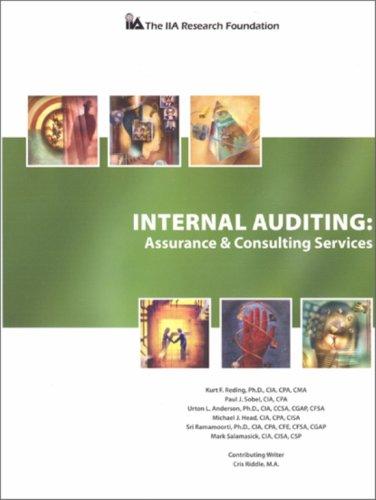Question
Integration Exercise 9 Master Budgeting. LO 8-2, LO 8-3, LO 8-4, LO 8-5, LO 8-6, LO 8-7, LO8-9, LO 8-10 Endless Mountain Company manufactures a
Integration Exercise 9 Master Budgeting. LO 8-2, LO 8-3, LO 8-4, LO 8-5, LO 8-6, LO 8-7, LO8-9, LO 8-10
Endless Mountain Company manufactures a single product that is popular with recreation enthusiasts. The company sells its product to retailers throughout the quadrant of the United States. It is in the process of creating a master budget for reports a balance sheet as December 31, 2016 as follows:
| Endless Mountain Company | ||
| Balance Sheet | ||
| December 31, 2016 | ||
| Assets | ||
| Current Assets: | ||
| Cash | $46,200 | |
| Accounts receivable | 260,000 | |
| Raw material inventory (4,500 yds) | 11,250 | |
| Finished goods inventory (1,500 units) | 32,250 | |
| Total current assets | $349,700 | |
| Plant and equipment: | ||
| Buildings and equipment | 900,000 | |
| Accumulated deprectiation | (292,000) | |
| Plant and equipment, net | 608,000 | |
| Total assets | 957,700 | |
| Liabilities and Stockholders' Equity | ||
| Current liabilities: | ||
| Accounts payable | $158,000 | |
| Stockholders' equity | ||
| Common stock | $419,800 | |
| Retained earnings | 379,900 | |
| Total stockholders' equity | 799,700 | |
| Total liabilities and stockholders equity | 957,700 |
The company's chief financial officer (CFO), in consultation with various managers across the organization has developed the following set of assumptions to help create the 2017 budget:
1. The budgeted unit sales are 12,000 units, 37,000 units, 15,000 units and 25,000 units for quarters 1-4, respectively. Notice that the company experiences peak sales in the second and fourth quarters. The budgeted selling price for the year is $32 per unit. The budgeted unit sales for the first quarter of 2018 in 13,000 units.
2. All sales are on credit. Uncollectible accounts are negligible and can be ignored. Seventy-five percent of all credit sales are collected in the quarter of the sale and 25% are collected in the subsequent quarter.
3. Each quarter's ending finished goods inventory should equal 15% of the next quarter's unit sales.
4. Each unit of finished goods requires 3.5 yards of raw material that costs $3.00 per yard. Each quarter's ending raw materials inventory should equal 10% of the next quarter's production needs. The estimated ending raw materials inventory on Decmeber 31, 2017, is 5,000 yards.
5. Seventy percent of each quarter's purchases are paid for in the quarter of purchase. The remaining 30% of each quarter's purchases are paid in the following quarter.
6. Direct laboreres are paid $18 an hour and each unit of finished goods requires 0.25 direct labor-hours to complete. All direct labor costs are paid in the quarter incurred.
7. The budgeted variable manufacturing overhead per direct labor-hour is $3.00. The quarterly fixed manufacturing overhad is $150,000 including $20,000 of depreciation on equipment. The number of direct labor-hours is used as the allocation base for the budgeted plantwide overhead rate. All overhead costs (excluding depreciation) are paid in the quarter incurred.
8. The budgeted variable selling and administrative expense is $1.25 per unit sold. The fixed selling and administrative expenses per quarter include advertising ($25,000), executive salaries ($64,000), insurance ($12,000), property tax ($8,000), and depreciaition expense ($8,000). All selling and administrative expenses (excluding depreciation) are paid in the quarter incurred.
9. The company plans to maintain a minimum cash balance at the end of each quarter of $30,000. Assume that any borrowings take place on the first day of the quarter. To the extent possible, the company will repay principal and interest on any borrowings on the last day of the fourth quarter. The company's lender imposes a simple interest rate of 3% per quarter on any borrowings.
10. Dividends of $15,000 will be declared and paid in each quarter.
11. The company uses a last-in, first-out (LIFO) inventry flow assumption. This means that the most recenly purchased raw materials are the "first-out" to production and the most recently completed finished goods are "first-out" to customers.


Required:
5. Quarterly manufacturing overhead budget.
6. Ending finished goods inventory budget at December 31, 2017.
7. Quarterly selling and administrative expense budget.
8. Quarterly cash budget.
9. Income statement for the year ended December 31, 2017.
10. Balance sheet at December 31, 2017.
Book Home nsert Page Layout Formulas Dta Renew View 2 AutoSum Copy Format Painter ?-a : Conditional aFor ble-styles. B 1 u ??4 Merge & Center $-% , Insert Delete Format Sort & Find & Formatting as Table Styles 2ClearFilter Select H10 1 Sales bud IV sales units SP Sale value next year l 37,000.00 15,000.00 25,000.0013,000.00 32.00 384,000.00 1,184,000.00 480,000.00 800,000.00 416,000.00 12,000.00 32.00 32.00 32.00 32.00 sale of quarter: 88,000.0096 96,000.00 888,000.00 296,000.00 360,000.00 120,000.00 600,000.00 12 opening A/R payment tota 260,000.00 14 15 16 17 548,000.00 984,000.00 656,000.00 720,000.00 3 Production budget IV next year I 37,000.00 15,000.00 25,000.0013,000.00 12,000.00 5,550.00 19 sale add: closing FG 2,250.00 3,750.00 1,950.00 21 (15% of next sale) less: |opening FG 500.00 5,550.00) (2,250.00 3,750.00 HH Sheetl sheet2 sheet3 1041 PM 12/2018Step by Step Solution
There are 3 Steps involved in it
Step: 1

Get Instant Access to Expert-Tailored Solutions
See step-by-step solutions with expert insights and AI powered tools for academic success
Step: 2

Step: 3

Ace Your Homework with AI
Get the answers you need in no time with our AI-driven, step-by-step assistance
Get Started


